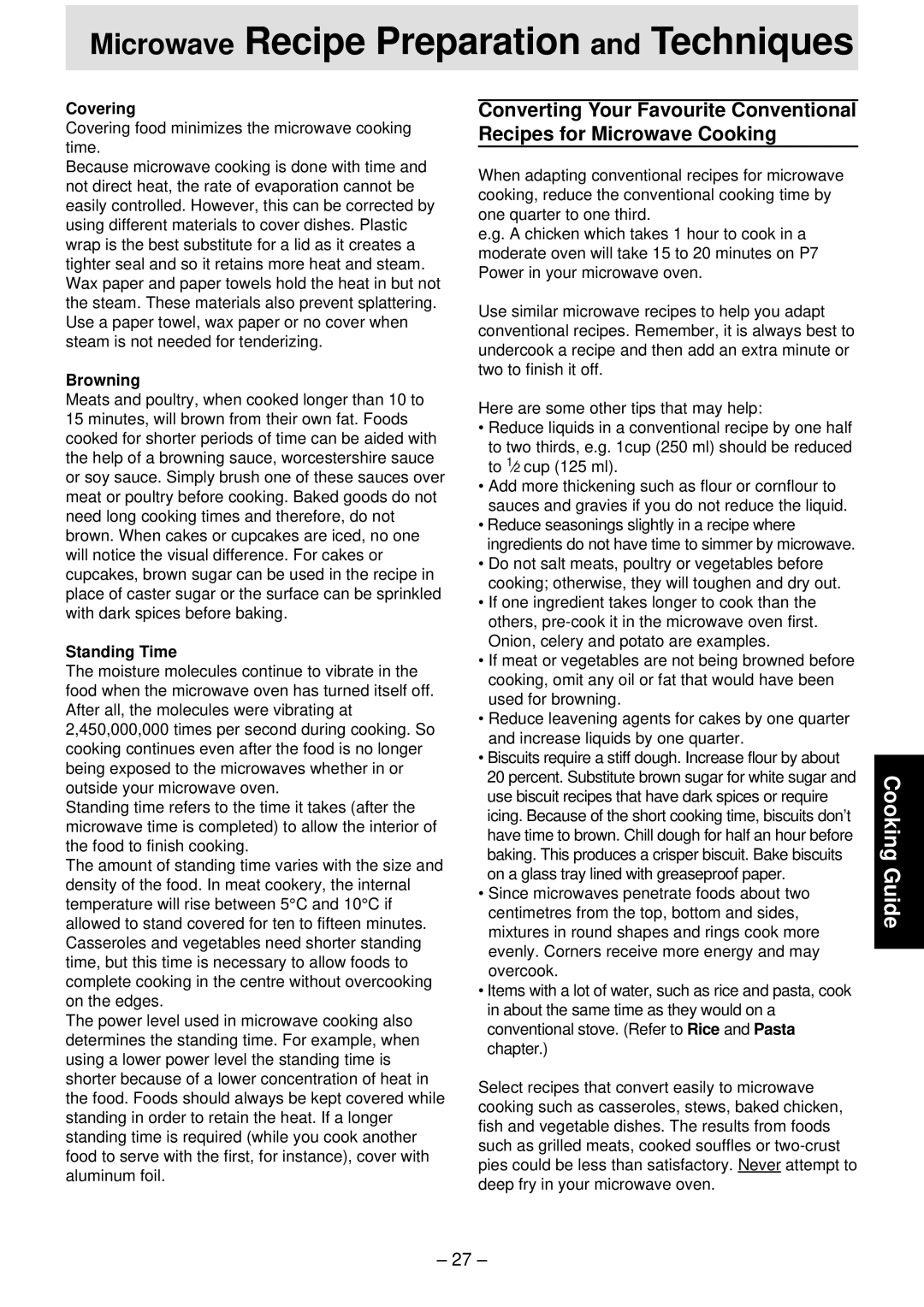NN-S781, NN-S761, NN-T791 specifications
The Panasonic NN-S761, NN-T791, and NN-S781 are standout models in the world of microwaves, each delivering impressive performance and innovative features tailored to meet diverse culinary needs.Starting with the Panasonic NN-S761, this microwave utilizes inverter technology, which takes cooking to a new level by providing consistent heat at any power level. This ensures that food is evenly cooked or heated throughout, eliminating cold spots often seen in traditional microwaves. The NN-S761 features a spacious 2.2 cubic feet capacity, making it suitable for larger meals and family-sized portions. Its sleek design is complemented by an easy-to-read LCD display and a variety of pre-programmed settings that simplify the cooking process. The genius sensor adjusts cooking times and power levels automatically, optimizing results. Additionally, the keep-warm feature maintains food temperature until you’re ready to serve.
Next, the Panasonic NN-T791 brings a blend of advanced technology and user-friendly design. With a 2.0 cubic feet capacity, this model also boasts inverter technology, which allows for precise cooking with less disruption in temperature. The NN-T791 is equipped with a one-touch sensor cook option that caters to common foods like rice, vegetables, and other staples, making meal preparation incredibly convenient. Its built-in smart cooking features ensure that dishes come out perfectly cooked every time. The microwave also stands out with easy-clean interior appliances, preventing stuck-on grime and making maintenance a breeze.
Lastly, the Panasonic NN-S781 is another excellent option, particularly for those focused on versatility. It offers a compact design with a 1.2 cubic feet capacity, ideal for smaller kitchens or spaces. This model includes multiple cooking options, including auto defrost and a variety of reheating settings. The NN-S781 also implements inverter technology, ensuring smooth cooking cycles and superior results, whether you’re steaming vegetables or reheating leftovers. The quick 30-second option is particularly handy for those quick tasks when you need to heat something fast without navigating through numerous buttons.
In conclusion, whether you choose the NN-S761, NN-T791, or NN-S781, Panasonic provides high-quality microwaves that incorporate advanced inverter technology, user-friendly features, and efficient designs. Each model ensures consistently delicious results, making mealtime easier and more enjoyable for families and individuals alike. Panasonic continues to be a trusted name in kitchen appliances, consistently adding innovation that suits any cooking style or requirement.

